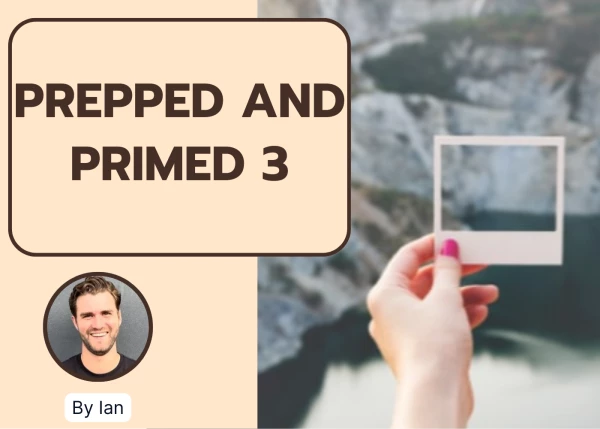Hello there! I am preparing for the 1st round of McKinsey interviews - which is in 2 weeks. After a few weeks of preparation, I am able to build frameworks with a good structure. There are still some issues where I got stuck and don't know how to improve:
1. How to think of bullet points in the first question? First thinking of key 2-3 drills and then diving into ideas for each of them? Or the opposite way? What's your best method? Also, is a 2-minute good amount of time to think of structure?
2. Even though I practice a lot of cases with peers, I am still not able to improve my chart/graph skills! How to read the chart, and think of missing points in less than a minute?
Thank you for the answers! :)
McKinsey - Framework problems


Hi there,
1. How to think of bullet points in the first question? First thinking of key 2-3 drills and then diving into ideas for each of them? Or the opposite way? What's your best method? Also, is a 2-minute good amount of time to think of structure?
There's the “build up” and the “structure-down” approach. You can use either (both work) and it depends on both you and the case prompt. Daily reading will help a lot. As will daily practice of frameworks. Yes, 2 minutes is about right for a framework.
2. Even though I practice a lot of cases with peers, I am still not able to improve my chart/graph skills! How to read the chart, and think of missing points in less than a minute?
Be objective-driven! Think about the goal/purpose of the case. Then, look at differences in #s. From those differences, relate them to insights. Still struggling? Rocketblocks and casecoaching can help unblock you.
==========================
HOW TO FRAMEWORK
While I do highly recommend you get coaching for this, I can provide some initial guidance here.
Hypothesis-driven - We are no longer singular hypothesis-driven, stating this boldly at the beginning of the case. Rather, we are hypotheses-driven or objective-driven. This is very different.
Your entire framework is a set of hypotheses and views as to how to solve a problem.
You don't need to state it explicitly, but remember that 1) You need to always be thinking about one and 2) You need to be demonstrating your drive towards one.
Also, remember that a hypothesis isn't necessarily "I believe x is the cause". Be better hypothesis is "If we can see what's happening with A, and A is going up, and then we look into B and B is big, then x is likely the case".
A hypothesis is much more about what questions do I need to ask/answer and how, in order to see what's happening.
Another way of viewing it:
Your framework is your structure for approaching the problem. It consits of a few main areas you'd like to look at. Inherent in your framework is a view that "If I answer A, B, and C, then we have an answer"
So, for market entry:
1) If the market is big, and it's growing, then we still want to considering entering
2) If #1 = yes, then let's see if it's attractive...can we win there? Is our product good/better than our competition's? Etc. If yes, let's definitely consider entering.
3) If #1 and #2 = yes, then, when we do enter, are we sure we can win? I.e. do we have the right plans. Will implementation actually pan out? Do we have the expertise, capital, etc.? In other words, if #2 is the thearectical, #3 is the reality.
Then, your summary becomes "I believe we should enter the market, if we can prove it's a good market, the it's attractive to us specifically, and that we will win it".
^Now this is a hypothesis :)
Read these 4 Q&As for some great context + discussion:
Hope this helps! This is a tricky topic that's difficult to properly answer in writting...if you want a more thorough explanation, and training in the mindset shift required here, don't hesitate to reach out!

Hey there,
Straight to your questions:
1. There is a difference between a framework derived for McKinsey vs. a framework created for other consulting interviews.
At the core, McKinsey wants to see creative ideas communicated in a structured manner, the more exhaustive the better.
Your goal should be to come up with a tailored and creative answer that fits the question. The framework should - broadly speaking - follow these three characteristics:
- Broad
- Deep
- Insightful
You would need to go into detail and qualify your answer with practical examples and more details.
To come up with the framework you have 1-2 minutes (2 minutes is kind of a soft limit). Then, in a McKinsey interview, you can take up to 6-8 minutes to present your structure, your qualification, and hypotheses. This is due to the interviewer-led format that McK employs. The interviewer will only ask 'what else' if you
- haven't gone broad or deep enough
- did not explain your ideas well enough for them to stand out (again, you have time here)
The firm wants to see exhaustive and creative approaches to specific problems, which more often than not do not fit into the classic case interview frameworks that were en vogue 10 years ago...
Again, this only applies if everything you say
- adds value to the problem analysis
- is MECE
- is well qualified
- includes a detailed discussion of your hypotheses at the end
Summing up the core differences:
- You have more time to think about it
- You have more time to lead the interviewer through your structure
- You need to go wide and deep to create an exhaustive and creative structure, whereas in BCG/Bain you rather need to be focused and quickly zero in on the key points where the problem of the case is most likely buried
- Questions tend to be more creative and not suitable for classic frameworks, especially on the lower levels of the framework
- Instead of drilling through your framework, in the end, to look for answers to solve the case, in a McKinsey-style, you need to discuss what part of your framework you would want to prioritize
The difference in format and way of answering a question is the reason why I recommend preparing very differently for McK interviews vs. other consultancies.
When presenting your framework always go top-down, starting with your top-level buckets, then diving deeper into them.
2. As for charts, learn to deal with any chart problem that is thrown at you.
Your goal should be - no matter the context, industry, or function of the case - to learn how to
- look for the key insights and implications of each (usually 2-4 items that stand out from the rest)
- relate them back to the case and the question at hand
- highlight how you would move forward
Have a look at this article on McKinsey Case Interviews or reach out for a session for a detailed explanation with a proven method that covers every element of the McKinsey interview.
Cheers,
Florian

Hi there,
I would strongly recommend coaching at this point – a “specialized” McKinsey coach will be able to unblock you quite quickly here.
As for your questions:
- How to think of bullet points in the first question? First thinking of key 2-3 drills and then diving into ideas for each of them? Or the opposite way? What's your best method? Also, is a 2-minute good amount of time to think of structure? The first question is always about specific drivers for a specific dynamic e.g. “What are some of the factors that might affect the economic development of company XYZ over the next 10 years?”. The important thing to really internalize is that the emphasis is on the drivers that must be specific, relevant, and well prioritized. Packaging them up in a MECE structure is important and helps thinking through the drivers. However, candidates often exclusively prioritize having a structure as opposed to the actual drivers, which results in empty generic structures. This will cost you dearly in terms of scoring. As for timing, 2 minutes seems fair.
- Even though I practice a lot of cases with peers, I am still not able to improve my chart/graph skills! How to read the chart, and think of missing points in less than a minute? Not sure why you mention having 1 minute and totally depends what you’re talking about - you will hardly get a minute to look at a chart. Importantly, every chart that I have ever seen in McKinsey can be approached in 2 stages:
- High level assessment of what you’re observing without crunching any numbers. This results in identification of the most obvious insights.
- Detailed assessment of what you’re observing that usually requires crunching some numbers to create numerical insights that aren’t immediately obvious.
The trick is to always find the opportunity to crunch numbers and find the hidden insight.
I’m offering a dedicated session for McKinsey case openings / approaching charts – let me know if this is something you’d like to discuss. Happy to help!

Let me give you some guidance on the second part of your quetion - how to approach exhibit reading:
- Read the slide by yourself (take your time, ask questions if you need to understand the slide)
- Consider the case objective when analyzing the slide
- Tell the impact of the slide in terms of the recommendation
- Explain the insights and support with the evidence from the slide.
Candidates usually do three mistakes:
- They just describe what the slide says (e.g. segment X is growing by 10%"). There's no “so what”, no insight".
- They bring up an insight… but it is unrelated to the problem you are trying to solve.
- They just don't know what to say.
In all of these situations the real problem is that they are not being objective or hypothesis driven. You have to analyze the exhibit in the context of the problem you are trying to solve.
So the first question you have to ask yourself is: how does this influence the case recommendation? (e.g. “should we invest in market XYZ”?)? Is this supporting evidence or not? Once you find it, you have an objective or hypothesis driven insight.
Then when you read the slide you say: this does (not) support entering market X, because of insights XYZ, which is based on ABC evidence".
If you approach exihibit reading by being objective-driven as I suggest above, you are unlikely to fail relevant points.

Hello,
To answer your questions:
1. The way to refine this skill is practice. There's no one way of doing frameworks: some people find it more intuitive to think top-down (come up with big buckets first, then do sub-points underneath them), others find bottoms-up more intuitive (brainstorm sub-points, then group them by bucket). Go with what makes more sense for you. The more cases you do, the better you will be able refine your approach. It may be helpful to look over some standard frameworks (but don't just memorize them! take time to understand them and figure out what parts may apply to which case). Some expert feedback from a coach may also be very helpful at this stage. Regarding timing, I'd say 2 mins is fine but on the longer end - I'd aim for around 1.5 mins.
2. Again, I think the key here is practice, and getting expert advice in a live case session if you are able to. My general advice for reading graphs is first to ask yourself, what is the graph showing? Do you understand it? What are the units on the axes? If something is unclear, ask the interviewer. Then, proceed to think about what is important here. It is quite common for graphs in cases to be visually dense / throw a lot of information at you that you don't actually need. Figure out what it is that you need to know to answer the question at hand. Then just focus on that. Final tip: some candidates find it helpful to voice over their thought process while they are reading, while others prefer to take a minute to themselves and then provide a more concise summary of their reading of the chart. Either of these approaches can work, so figure out which is more intuitive and helpful for you.
Best of luck, and feel free to message me if you have any more questions!













